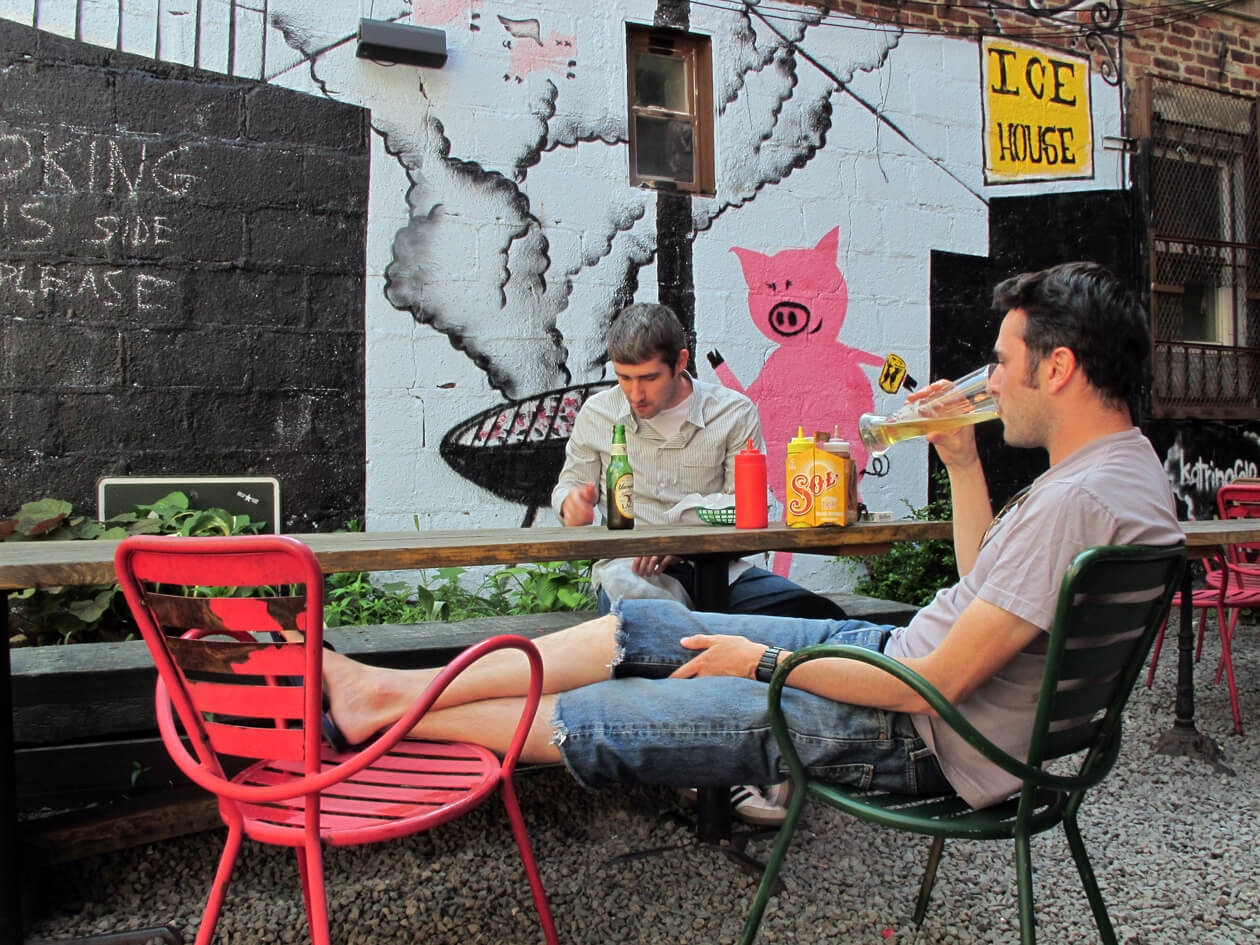There’s no such thing as a bad seat at the Brooklyn Ice House. The two picnic tables in front of the bar provide views of passersby. In the bar’s spacious back patio, wooden tables and benches are sprinkled among rusty chairs—nothing precious enough to cause concern if you have a little spill, nor dirty enough to fear sitting on. Inside, two televisions are strategically placed so that almost every seat has a view of the game or movie. Tables sidle up to maroon leather that lines the lower half of the wall; this area is perfect for meeting a friend, more intimate discussions, or when you just don’t want to risk small talk. The bar itself, though, as with most dive bars, is the place to be if you’re feeling social. Whether it’s a bartender or another visitor, there’s always someone to share a conversation with.
There are always at least a few patrons at Brooklyn Ice House, and if the bartender doesn’t know your name when you walk in, he or she will likely have learned it before you’ve left. Community takes a new shape in a place like this; on a recent evening, I found myself elbow to elbow with a group of three friends celebrating a birthday, a couple on a date, and a man so drunk, he couldn’t resist telling me (more than once) that I looked like someone that would edit teleprompters. Another evening I met a man sitting out front; he visits the Ice House about once a week, watching the street life, and sometimes using the time to give his mother a call while sipping a beer. An older group of friends co-opted the bar’s large, circular table to catch up, while a couple with two toddlers stopped in for a quick meal after work (and a couple of drinks for the caregivers).
The social aspect of the bar is aided by its affordability. Nowadays, even a Budweiser can cost $8 in some restaurants, but here you can enjoy one for just $5 (no tax; cash only), or $4 if you happen to be in during happy hour. In addition to affordability, the bar maintains an impressive range of beers. Choose from the low-brow (PBR, Budweisers, Miller High Life), the craft beers (Dogfish Head, Sixpoint, Bitburger), or the imported (Smith Smith, Duvel, a raspberry lambic from Austria). Unlike some dive bars where ordering a cocktail is frowned upon, the Palomas, mules, and other options (all written out on the chalkboard menus) are not something to look down on.
Specials are borderline nutritious
As you walk into the Ice House, you vaguely note the musk of beer, a reminder of what’s king here; but the food is confusingly delicious and wide-ranging. Classics like a burger, pulled pork sandwiches, fries, onion rings, or Frito pie (imagine a bag of Fritos, torn open within a bowl, then topped with chili, some very not-real cheese, and pickled jalapeños) are consistently available. Meanwhile, the specials are oddly homey and borderline nutritious—like baked lasagna or a lamb gyro.
Eater lists Brooklyn Ice House as one of the city’s best dive bars, but the title barely scratches the surface. The bar goes beyond offering a cheap drink or company, to inspiring community and even art. Prints of the bar’s facade, drawn by artist John Tebeau, can be purchased online for $90. Search for the song “B61” to hear folk singer Aoife O’Donovan recall past meetings in the local haunt: “took the B61 across town / to where he was waiting at the ice house / wish it was my house”. While it might not be your house, you’re welcome to stop by for yourself any day of the week, 12 pm to 4 am.
There are many perks of living in Red Hook, and the Brooklyn Ice House is certainly one of them.










